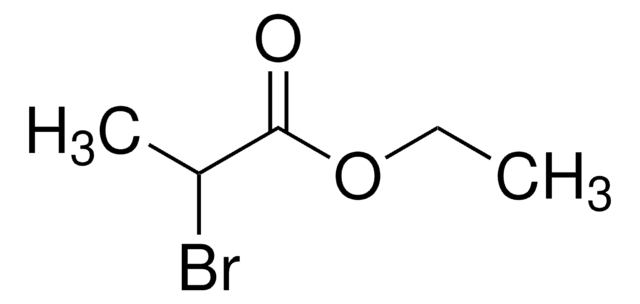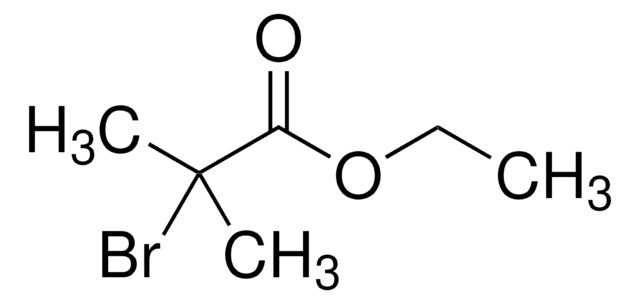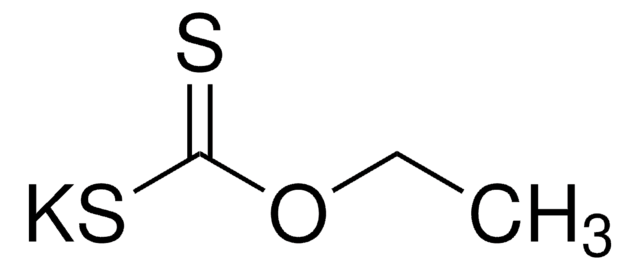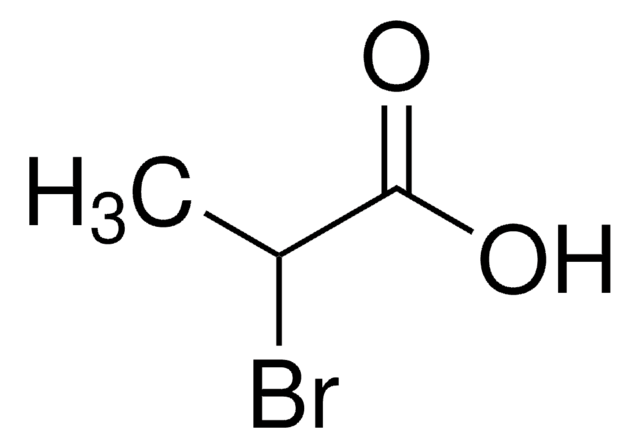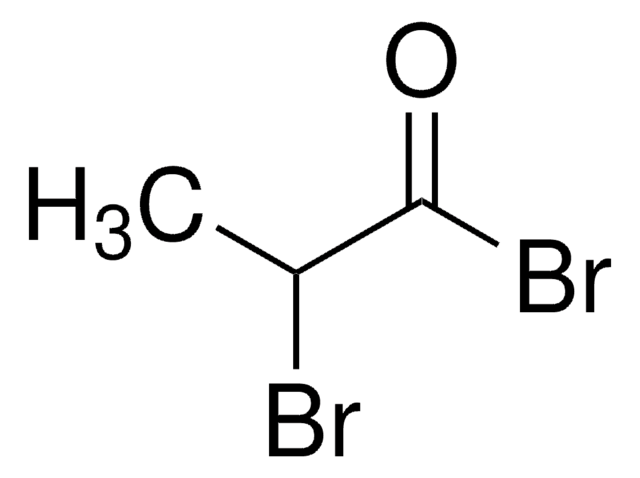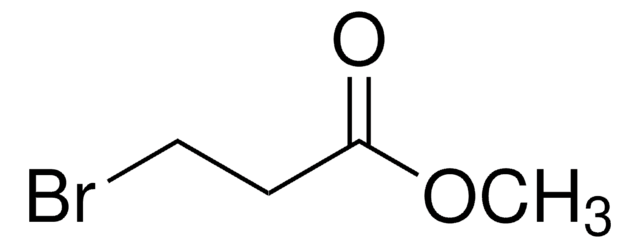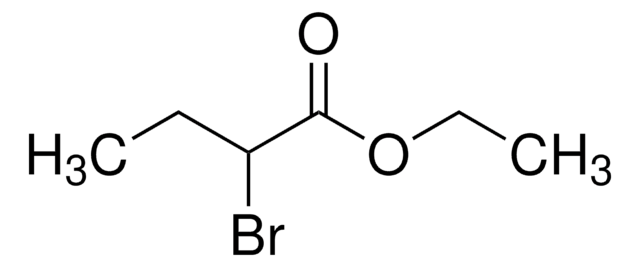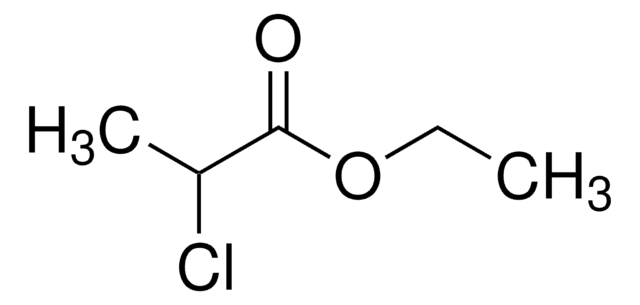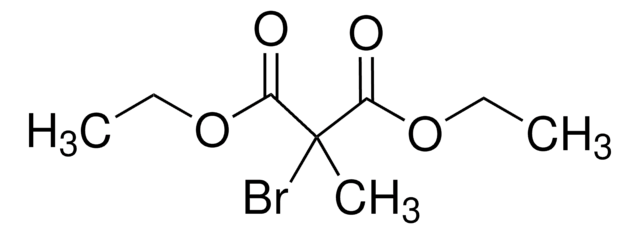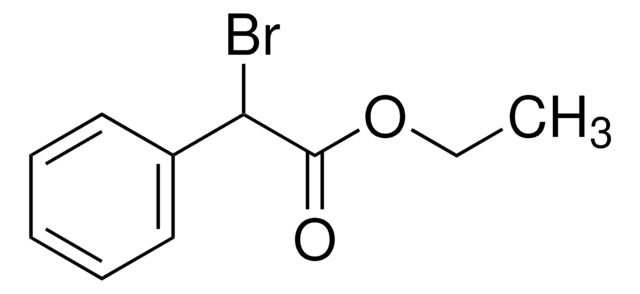Wichtige Dokumente
167185
Methyl-2-brompropionat
98%
Synonym(e):
(±)-2-Bromopropionic acid methyl ester, (±)-Methyl 2-bromopropionate, 2-Bromopropanoic acid methyl ester, 2-Bromopropionic acid methyl ester, Methyl (±)-α-bromopropionate
About This Item
Empfohlene Produkte
Qualitätsniveau
Assay
98%
Form
liquid
Brechungsindex
n20/D 1.451 (lit.)
bp
51 °C/19 mmHg (lit.)
Löslichkeit
water: insoluble
Dichte
1.497 g/mL at 25 °C (lit.)
Funktionelle Gruppe
bromo
ester
SMILES String
COC(=O)C(C)Br
InChI
1S/C4H7BrO2/c1-3(5)4(6)7-2/h3H,1-2H3
InChIKey
ACEONLNNWKIPTM-UHFFFAOYSA-N
Suchen Sie nach ähnlichen Produkten? Aufrufen Leitfaden zum Produktvergleich
Verwandte Kategorien
Anwendung
Signalwort
Danger
H-Sätze
Gefahreneinstufungen
Eye Dam. 1 - Flam. Liq. 3 - Skin Corr. 1B - STOT SE 3
Zielorgane
Respiratory system
Lagerklassenschlüssel
3 - Flammable liquids
WGK
WGK 3
Flammpunkt (°F)
125.6 °F - closed cup
Flammpunkt (°C)
52 °C - closed cup
Persönliche Schutzausrüstung
Faceshields, Gloves, Goggles, type ABEK (EN14387) respirator filter
Hier finden Sie alle aktuellen Versionen:
Besitzen Sie dieses Produkt bereits?
In der Dokumentenbibliothek finden Sie die Dokumentation zu den Produkten, die Sie kürzlich erworben haben.
Kunden haben sich ebenfalls angesehen
Unser Team von Wissenschaftlern verfügt über Erfahrung in allen Forschungsbereichen einschließlich Life Science, Materialwissenschaften, chemischer Synthese, Chromatographie, Analytik und vielen mehr..
Setzen Sie sich mit dem technischen Dienst in Verbindung.